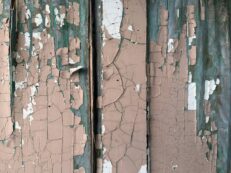
Not all foundation repairs are created equal. Some homes stay rock solid for decades after a repair, while others begin to sink again within a few years. The difference isn’t luck or the contractor’s name on the truck, it’s something much more fundamental. What separates a lasting solution from a temporary band-aid comes down to how thoroughly the problem was diagnosed before any work began.
The real answer lies in understanding what caused the foundation to fail in the first place. Many contractors jump straight to fixing the visible crack without asking why it appeared. That’s like treating a symptom while ignoring the disease. Proper foundation repair requires digging into soil conditions, drainage patterns, and structural loading before recommending any stabilization approach. When professionals take time to understand the root cause, repairs hold. When they don’t, homeowners end up calling again in a few years.
Understanding these distinctions helps you make smarter decisions when your foundation needs attention, and it shows you what questions to ask professionals like Carolina Foundation Solutions or any other repair company.
This article unpacks why certain repair approaches fail and what professionals do differently to ensure strength that endures season after season. You’ll learn the difference between quick fixes that look good temporarily and solutions engineered to last a lifetime.
The Problem With Quick Fixes
Patching a visible crack with sealant or epoxy is fast and cheap, which is exactly why so many contractors offer it as a solution. The crack fills, it looks better, and for a few months or even a year, the homeowner feels relieved. Then the crack reappears, sometimes in the same spot, sometimes nearby. This happens because the underlying cause was never addressed.
Most quick-fix approaches treat symptoms, not causes. If water pressure is building beneath your foundation because drainage is poor, sealing the crack doesn’t stop that pressure from finding another weak spot. If soil has shifted unevenly because of clay expansion, a temporary patch won’t prevent the foundation from continuing to move. You’ve spent money, but you haven’t solved the actual problem driving the damage.

The real cost of quick fixes is that they delay necessary work while allowing the underlying problem to worsen. Soil conditions that weren’t corrected keep degrading. Water damage compounds. What could have been a straightforward repair becomes a more complex and expensive project. Homeowners who go this route often end up spending more money overall than they would have if they’d invested in proper diagnosis and repair from the start.
The Role of Soil, Load, and Design
Your home’s weight and the composition of ground beneath it are everything when it comes to how forces distribute through a foundation. Every structure pushes down on the earth, and that earth pushes back. When soil is stable and uniform, the load transfers evenly. When soil is inconsistent, or when water weakens it, some areas of the foundation bear more stress than others. That’s when cracks appear and movement begins.
Structural engineers account for soil classification, bearing capacity, and seasonal changes before recommending stabilization systems. They’re not just looking at the crack, they’re looking at the bigger picture of how the entire home interacts with the ground. Different soil types require different approaches. Clay behaves differently than sand or silt, and those differences determine whether you need helical piers, underpinning, or a different solution entirely.
Load path analysis is also critical. Some homes were built with foundations that don’t match the structural demands of the building above. A room addition made a decade ago might have changed how weight distributes, creating stress that wasn’t present when the house was originally built. A good repair assessment considers all these variables. Repairs that ignore soil composition, load distribution, and structural design risk uneven settling and repeated failure. That’s why professional evaluation isn’t optional, it’s the foundation for any repair that actually lasts.
Materials and Methods That Last
Modern foundation repair uses materials engineered specifically for long-term durability. Helical piers are steel shafts twisted deep into the ground to reach stable soil, then used to support the foundation from below. Carbon fiber straps wrap around foundation walls to reinforce concrete and prevent further cracking. Epoxy injections work when they’re applied to stable foundations as a preventative measure, not as a fix for active movement. Each method has its purpose, and the right choice depends on understanding what caused the failure.
Installation quality separates a repair that lasts from one that doesn’t. A helical pier installed incorrectly or at the wrong depth won’t provide adequate support. Carbon fiber straps applied to a still-moving foundation won’t hold because the movement continues beneath them. Proper installation requires knowledge, experience, and adherence to engineering specifications. It’s not something a quick contractor can rush through on a Friday afternoon. The best repair companies take time, follow specs precisely, and stand behind their work with warranties that reflect their confidence.
The combination of quality materials and proper installation method creates strength that endures weather, time, and seasonal stress. When homeowners invest in repairs done right, they’re not just fixing today’s problem, they’re buying decades of stability. That’s why working with professionals who understand soil mechanics, use proven materials, and commit to proper installation matters so much. Cheap repairs fail fast. Quality repairs become something your home benefits from for the rest of your ownership.
Conclusion
A foundation repair that lasts a lifetime begins with understanding why the problem started in the first place. Skipping the diagnostic step might save money upfront, but it guarantees problems later. Homeowners who invest in quality diagnosis and workmanship avoid repeated disruption, expense, and the stress of wondering if their foundation is stable. With expert guidance from experienced professionals, structural repairs are designed to endure, not just survive, the tests of time and weather. That’s the difference between a temporary fix and a solution that holds.












